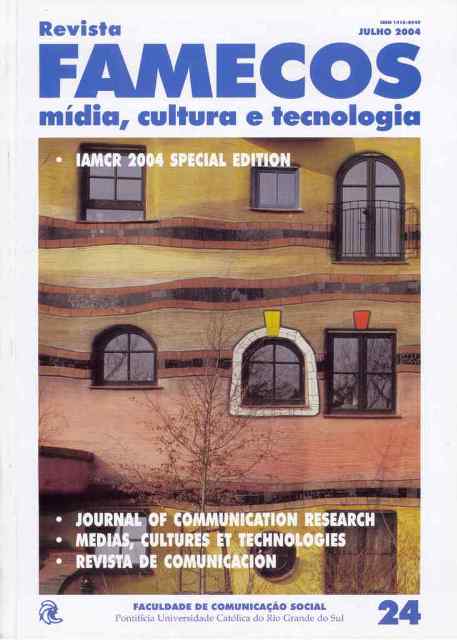Exploring the notion of presence in remocollaborative learning environments
DOI:
https://doi.org/10.15448/1980-3729.2004.24.3268Keywords:
Learning environments, Communication dynamics, Collaborative mediaAbstract
In this paper we discuss issues related to communication and social dynamics characterizing remote collaboration between distant communities. These observations emerge from ethno-graphic researches conducted in collaborative workshop involving MIT -Massachusetts Institute of Technology students with other universities or private companies. The focus of the paper is the notion of presence. This notion is analyzed through three different related aspects: the presence of information, the presence of communication tools and, finally, the presence of people. These analysis give indications on how better design space for learning and remote collaboration using interactive multimedia communication tools.
Downloads
References
BASTIDE, Roger. Mémoire collective et sociologie du bricolagem. L’Année sociologique, n. 21, 1970.
DE CERTEAU, Michel. L’invention du quotidien. Paris: Éditions Gallimard, 1990.
DE KERCKHOVE, Derrick. Connected Intelligence: The Arrival of the Web Society. Canada: Somerville House Books, 1997.
HEIDEGGER, Martin. The question concerning technology and other essas. New York: Harper and Row, 1977.
JAKOBSON, Roman. Closing statement; Linguistics and Poetics. In: SEBEOK, Thomas A. Style in Language. MA: MIT Press, 1960. p. 350 - 377.
LÉVY, Pierre, The collective intelligence: Mankind’s emerging world in cyberspace. New York: Plenum Trade, 1997.
MAFFESOLI, Michel. Aux creux des apparences: Pour une éthique de l’esthétique. Paris: Plon, 1990.
MALINOWSKI, B. The problem of meaning in primitive languages. In: OGDEN, C. K.; RICHARDS, A. The Meaning of Meaning. USA: Harvest Book, USA, 1923, p. 296 - 336.
MEYROWITZ, Joshua. No sense of place. New York: Oxford University Press, 1985.
MITCHELL, William J. E-Topia. Cambridge: MIT Press, 1999.
______. Beyond productivity. Innovation technology, Innovation and creativity. Washington: The National Academic Press, 2003.
MORIN Edgar, Les sept saviors nécessaires à l éducation du futur. Paris: Ed. Du Seuil, 1999.
______. La méthode. La nature de la nature. Tome 1. Paris: Ed. Du Seuil, 1977.
RESNICK, Mitchell. Rethinking learning at the digital age. In: KIRKMAN, G. Global Information Technology Readiness Report 2001-2002. USA: University Press, 2002.
Downloads
Published
How to Cite
Issue
Section
License
Copyright
The submission of originals to Revista Famecos implies the transfer by the authors of the right for publication. Authors retain copyright and grant the journal right of first publication. If the authors wish to include the same data into another publication, they must cite Revista Famecos as the site of original publication.
Creative Commons License
Except where otherwise specified, material published in this journal is licensed under a Creative Commons Attribution 4.0 International license, which allows unrestricted use, distribution and reproduction in any medium, provided the original publication is correctly cited.






